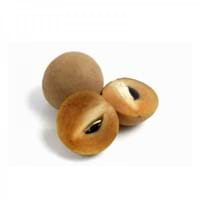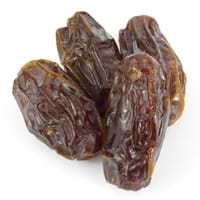Health Benefits
Anti-inflammatory properties, Arthritis treatment, Regulates Blood Sugar, Unknown
Cancer prevention, Cures gastro-intestinal troubles, Diarrhea treatment, Heart care, Heat stroke treatment, Improves muscular strength, Prevents constipation, Prevents nerve damage, Strengthening of bones
General Benefits
Boosts immune system, Controls blood sugar levels, Digestive aid
Boosts immune system, Maintains healthy cholesterol level, Strengthens bones
Skin Benefits
Nourishes skin, Protects skin from oxidative stress
Anti-aging benefits, Brightens and lightens complexion, Reduces wrinkles, Treatment of skin diseases
Hair Benefits
Prevents hair loss, Promotes longer and healthier hair, Regulates hair growth
Prevents hair loss, Promotes longer and healthier hair, Protects hair, Regulates hair growth
Allergy Symptoms
Asthma, Red rash, Swelling of mouth, tongue or lips
Redness of eyes, Runny nose, Sneezing, Watery eyes
Side Effects
Diarrhoea, Vomiting
Allergic reaction, Diarrhoea, Intestinal gas, Stomach pain, Tooth decay, Weight gain
Best Time to Eat
As a snack in the late afternoon
Any time except an hour after meal, Don't consume at night and before bed
Vitamin B5 (Pantothenic Acid)
Vitamin C (Ascorbic Acid)
Vitamin E (Tocopherole)
Not Available
Vitamin K (Phyllochinone)
Not Available
Lutein+Zeaxanthin
Not Available
Calories in Fresh Fruit with Peel
Calories in Fresh Fruit without Peel
Not Available
Not Available
Calories in Frozen Form
Not Available
Calories in Canned Form
Not Available
Calories in Juice
Not Available
Calories in Jam
Not Available
Calories in Pie
Not Available
Season
Winter
Spring, Summer
Varieties
Bush Table Queen, Heirloom Table Queen, Festival Hybrid, Early Acorn Hybrid, Table Ace, Ebony and Cream of the Crop
Barhi, Dayri, Deglet Noor, Halawy, Khadrawy, Medjool, Thoory and Zahidi
Seedless Variety
Not Available
No
Color
Dark green, Green-yellow, Orange green
Black, Brown, Red, Yellow
Inside Color
Not Available
Brown
Origin
Central America, North America, Unknown
Iraq
Soil Type
Well-drained
Clay, Loam, Sand
Climatic Conditions
Cold, Sunny
Hot, Warm
Facts about
- It was named as Acorn Squash for its resemblance to a large ribbed acorn.
- It is said that squash was being grown in Mexico as long as 10,000 years ago.
- It was the first food cultivated by native American Indians.
- Date is known as the tree of life in Middle east.
- Date palms cover 3% of the earth's total farmlands.
- Scholars believe that date (and not apple) was the real fruit mentioned in the Bible's Garden of Eden.
Wine
Not Available
Not Available
Beer
Not Available
Not Available
Spirits
Not Available
Not Available
Cocktails
Not Available
Not Available
Other Countries
Egypt, India, Iran, Italy, Mexico, Russia, Turkey, Ukraine, United States of America
Algeria, Iraq, Oman, Pakistan, South Africa, United Arab Emirates
Top Exporter
India
United Arab Emirates
Botanical Name
Cucurbita Pepo
Phoenix Dactylifera
Synonym
Winter Squash
Not Available
Subkingdom
Tracheobionta
Tracheobionta
Division
Magnoliophyta
Magnoliophyta
Class
Magnoliopsida
Liliopsida
Subclass
Dillenhidae
Arecidae
Order
Cucurbitales
Arecales
Family
Cucurbitaceae
Arecaceae
Species
Pepo
P. dactylifera
Generic Group
Not Available
Palm
Difference Between Sapota and Date
We might think that Sapota and Date are similar with respect to nutritional value and health benefits. But the nutrient content of both fruits is different. Sapota and Date Facts such as their taste, shape, color, and size are also distinct. The difference between Sapota and Date is explained here.
The amount of calories in 100 gm of fresh Sapota and Date with peel is 40.00 kcal and 282.00 kcal and the amount of calories without peel is Not Available and Not Available respectively. Thus, Sapota and Date belong to Low Calorie Fruits and High Calorie Fruits category.These fruits might or might not differ with respect to their scientific classification. The order of Sapota and Date is Cucurbitales and Arecales respectively. Sapota belongs to Cucurbitaceae family and Date belongs to Arecaceae family. Sapota belongs to Cucurbita genus of Pepo species and Date belongs to Phoenix genus of P. dactylifera species. Beings plants, both fruits belong to Plantae Kingdom.









